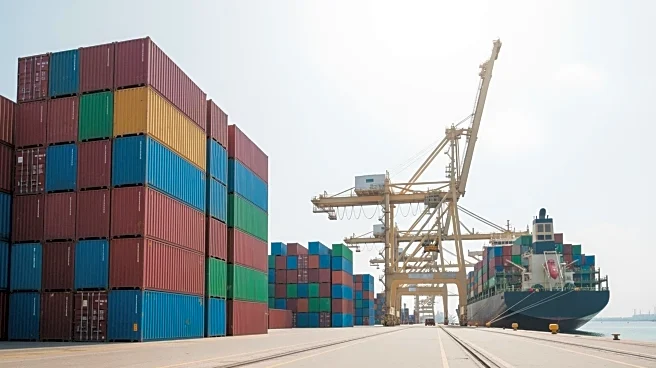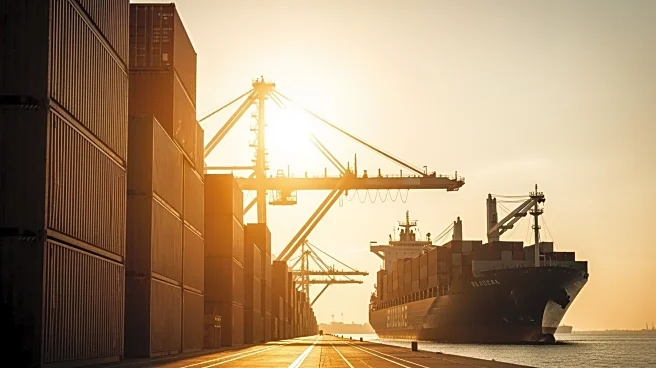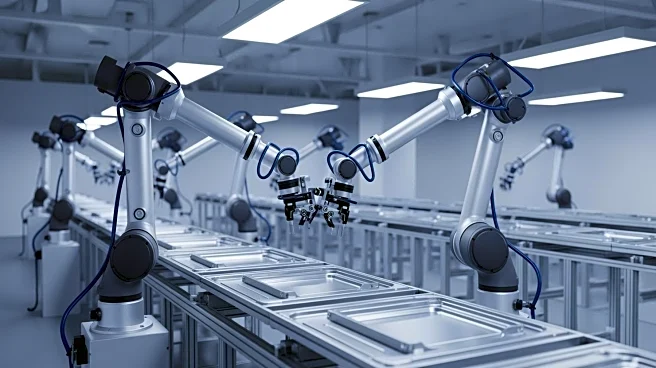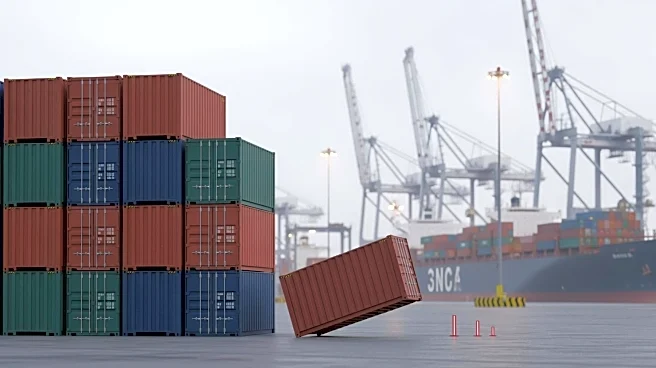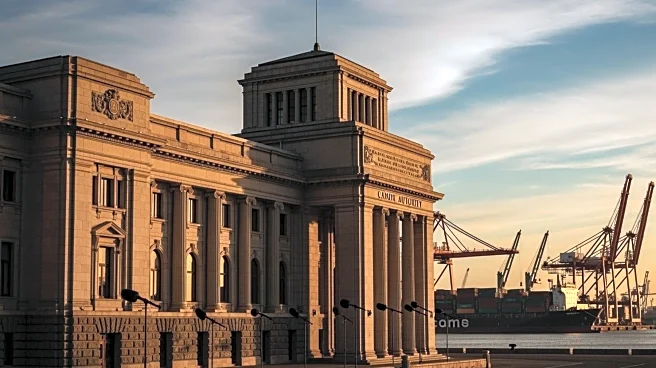What's Happening?
The American Association of Port Authorities (AAPA) has called on the U.S. government to reconsider its tariffs on Chinese-manufactured cargo handling equipment, which include a 100% tariff on ship-to-shore cranes and a proposed 150% tariff on other equipment like
gantry cranes and terminal tractors. These tariffs, part of the U.S. Trade Representative's revisions to the port fee program, are seen as a hindrance to port modernization and expansion efforts. AAPA argues that the tariffs will increase costs and delay growth, as there are limited domestic manufacturing options for these critical equipment types. The association is advocating for targeted tax credits and incentives to support domestic production and infrastructure development.
Why It's Important?
The tariffs on Chinese cargo handling equipment could have significant implications for U.S. ports and the broader maritime industry. By increasing costs, the tariffs may lead to delays in modernization and expansion projects, potentially affecting the efficiency and competitiveness of U.S. ports. This could have downstream effects on trade and economic growth, as ports play a crucial role in the supply chain. The call for domestic manufacturing incentives highlights the need for strategic policy decisions to balance trade protectionism with economic development goals.
What's Next?
The U.S. Trade Representative is accepting comments on the proposed tariffs until November 12, with the goal of finalizing the fee program by December 2025. Stakeholders, including port authorities and industry groups, are likely to continue lobbying for changes to the tariff policy. The outcome of these discussions could influence future trade and economic policies, as well as the strategic direction of the U.S. maritime industry.
